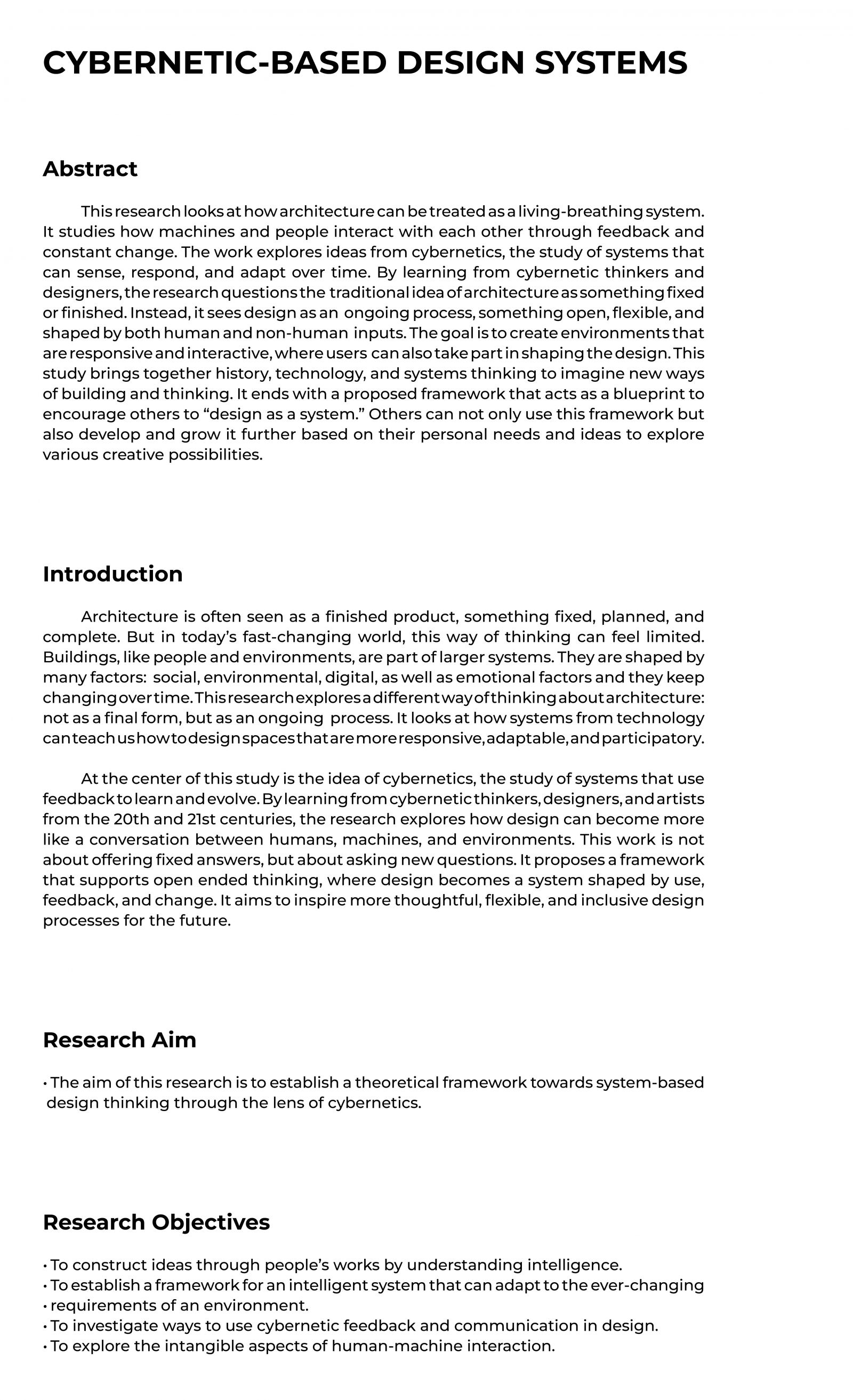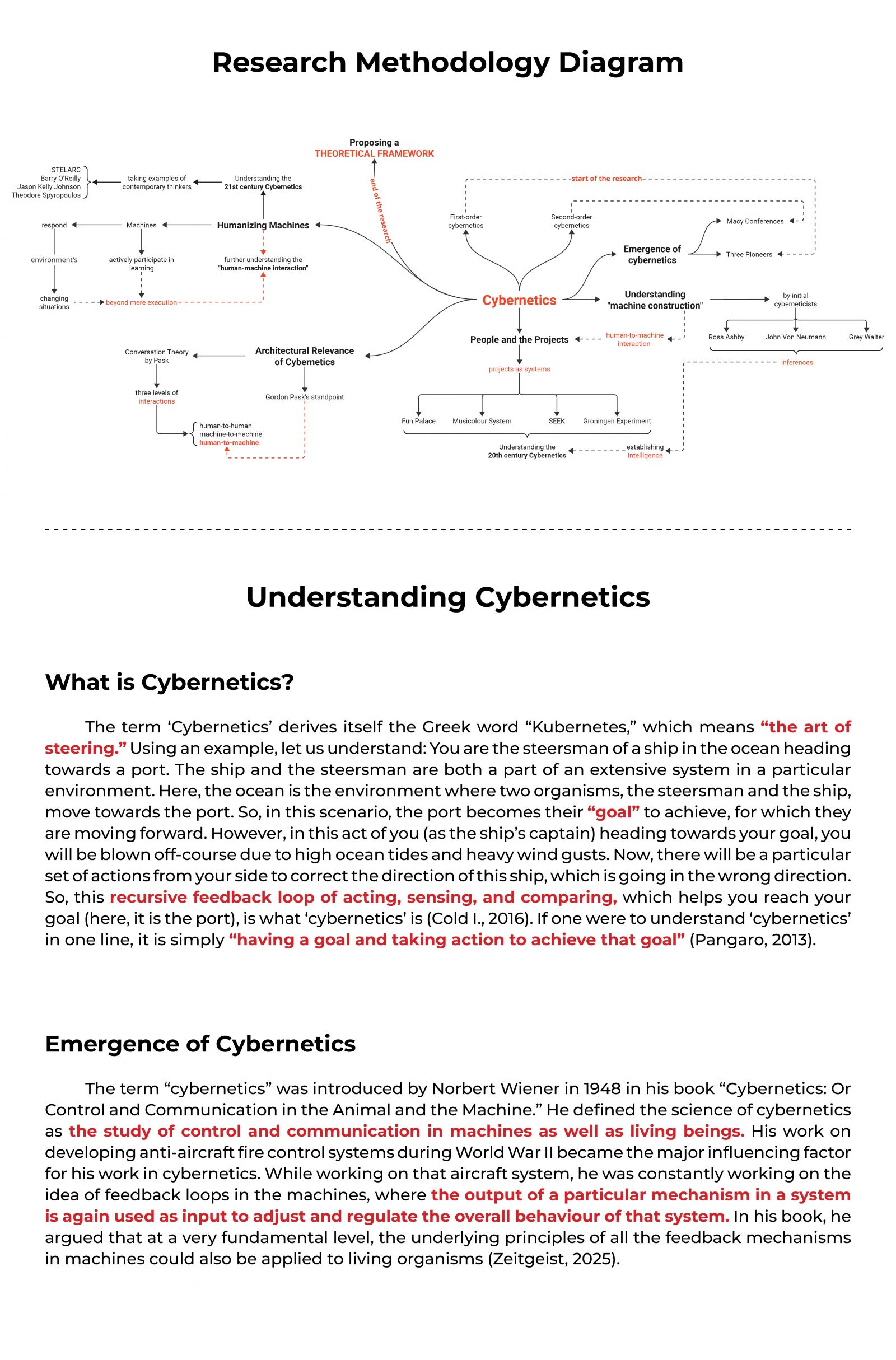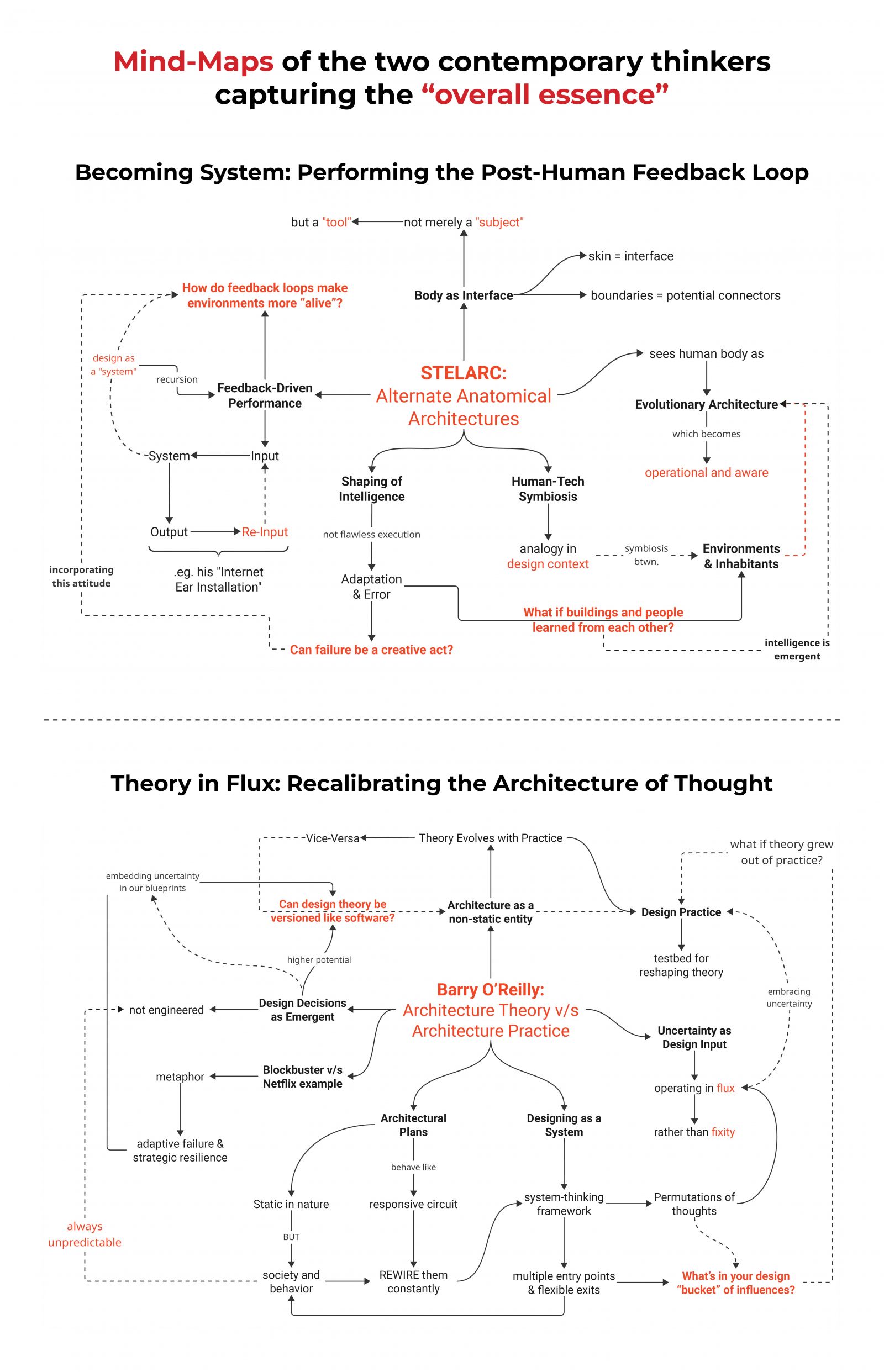Your browser is out-of-date!
For a richer surfing experience on our website, please update your browser. Update my browser now!
For a richer surfing experience on our website, please update your browser. Update my browser now!
This research looks at how architecture can be treated as a living-breathing system. It studies how machines and people interact with each other through feedback and constant change. The work explores ideas from cybernetics, the study of systems that can sense, respond, and adapt over time. By learning from cybernetic thinkers and designers, the research questions the traditional idea of architecture as something fixed or finished. Instead, it sees design as an ongoing process, something open, flexible, and shaped by both human and non-human inputs. The goal is to create environments that are responsive and interactive, where users can also take part in shaping the design. This study brings together history, technology, and systems thinking to imagine new ways of building and thinking. It ends with a proposed framework that acts as a blueprint to encourage others to “design as a system.” Others can not only use this framework but also develop and grow it further based on their personal needs and ideas to explore various creative possibilities.
View Additional Work








